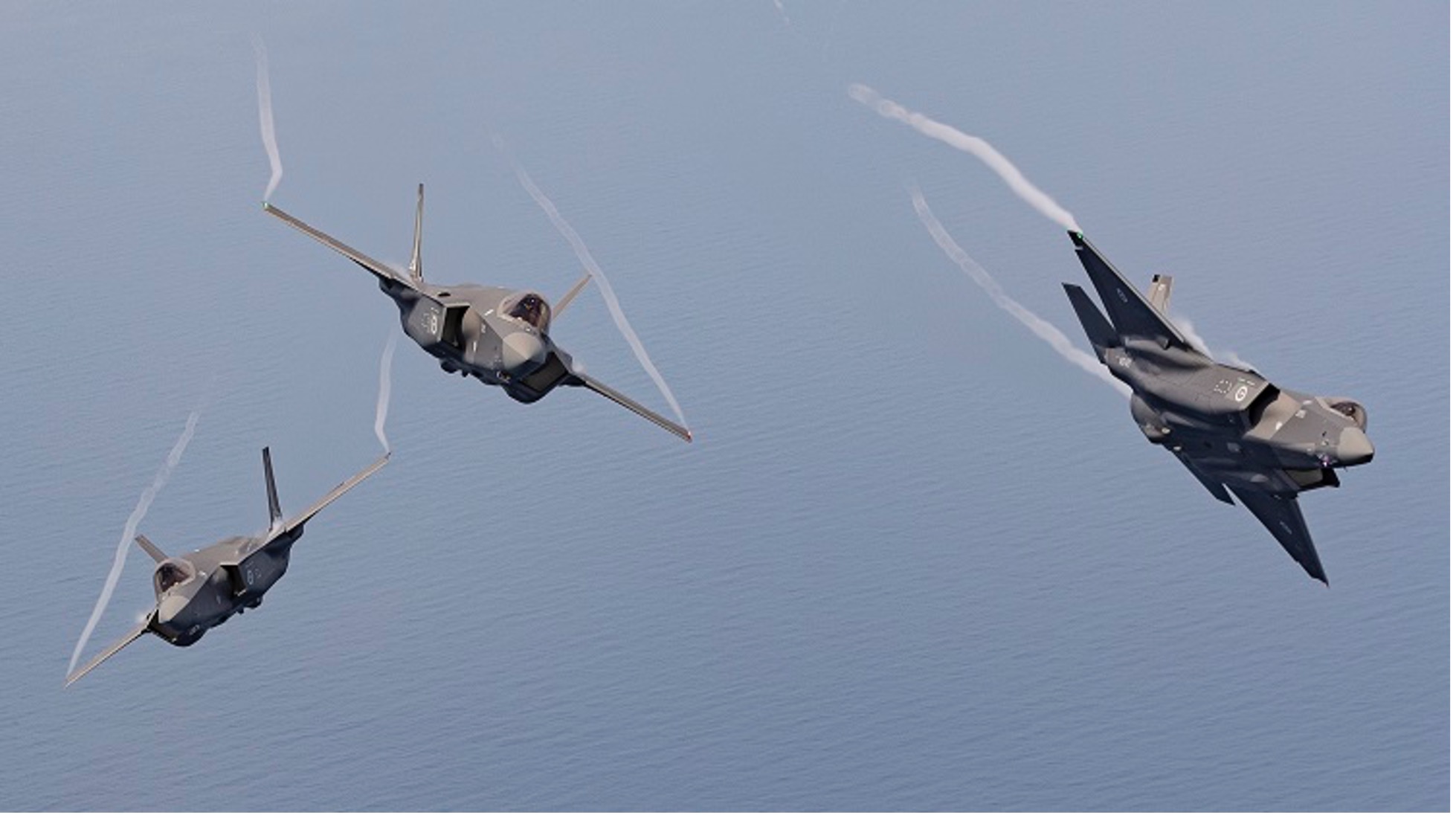By the Australian Defence Business Review
The Royal Australian Air Force has declared an initial operational capability (IOC) of its Lockheed Martin F-35A Lightning II fighter capability.
Just two years after the first two F-35As arrived in Australia, the RAAF now has 30 F-35As in service with 3SQN and 2 Operational Conversion Unit (2OCU) at Williamtown, and an additional three aircraft at Luke AFB in Arizona preparing to be ferried across the Pacific.
The IOC milestone recognises the service’s ability to conduct type-conversion courses for pilots and maintainers in Australia, that Australia can produce its own mission data files (MDF), and that a sufficiently deep level of spares and sovereign industry support has been established. The RAAF now has more than 40 qualified F-35A pilots and 220 maintainers trained on the F-35A.
The aircraft has been subjected to a detailed verification and validation (V&V) process over the past two years, a process that has proven the F-35A can operate with other ADF capabilities such as the E-7A Wedgetail and KC-30A MRTT, can be deployed to forward bases such as Townsville or Tindal, and can integrate with the ADF’s command and control system.
“For the last two years, Defence has rigorously tested the F-35A fleet to assess aircraft and system performance, and declare this important milestone,” Defence Minister Senator Linda Reynolds said in a December 28 statement.
“I would like to thank everyone that has worked so hard to get us to this point; to have accomplished all the required testing and materiel delivery is remarkable. The (ADF) now has an F-35A squadron ready to conduct technologically advanced strike and air combat roles, and another squadron dedicated to providing world-class training here in Australia.”
Some 590 F-35s of all models have been delivered worldwide. The RAAF is the ninth service to declare IOC with its F-35s, and follows the US Marine Corps, USAF, US Navy, the UK, Italy, Israel, Japan, and Norway.
The F-35A’s IOC declaration follows the end of operations of the McDonnell Douglas F/A-18A/B classic Hornet from Williamtown, with the withdrawal of the type from service with 77SQN. The RAAF’s final F/A-18A/B Hornet unit is 75SQN based at Tindal in the Northern Territory, and it will retire its Hornets at the end of 2021.
77SQN will commence its conversion to the F-35A in early 2021, and 75SQN will follow in 2022. Ferry flights of RAAF F-35As will continue through 2021 and 2022 with at least 15 aircraft due to be delivered to the RAAF in each of those years, and the type is expected to achieve a Final Operational Capability (FOC) in 2022/23. Australia currently has 72 F-35As on order under Project AIR 6000 Phase 2A/2B, and will consider an order for up 30 more aircraft for service entry from 2030 under Project AIR 6000 Phase 7.
To date, Australian industry has won a total of $2.7 billion worth of work on manufacturing and sustainment phases of the global JSF program, mainly on sub-contract to Lockheed Martin, BAE Systems, and Pratt & Whitney.
This article was written by Andrew McLaughlin and published by ADBR on December 28, 2020.
For our new book on the ADF building a fifth generation force, see the following:
Joint by Design: The Evolution of Australian Defence Strategy


